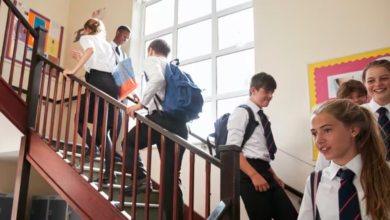Primary school leaders displaying symptoms of PTSD

Primary school leaders are struggling, and it’s getting worse, with some showing symptoms of Post-Traumatic Stress Disorder, according to the results of a survey conducted by NZEI Te Riu Roa and the Australian Catholic University.
Researcher Associate Professor Phil Riley says initial results from the annual Health and Wellbeing Survey have shown so far that 37 percent (of 321 principals and senior school leaders) were displaying significant degrees of distress through raising a “red-flag” in answering questions in the survey. This group are in need of urgent attention, says Dr Riley.
In the red-flag system, a participant is sent an automatic email urging them to seek help and sending links about where to do so. Red flags are generated in three ways – either the participant has indicated they are thinking of self-harming, they have a high combined score across categories or a series of quality of life indicators that are concerning.
Dr Riley says that senior leaders in schools need help, and the education system needs a whole re-design and to come up with creative solutions such as job-sharing.
The problem is getting worse – in 2016, the final red flag percentage was 20 percent. The survey is also being done in Australia and Ireland which were showing similar results, indicating that there is something wrong with the role, not the person, and that it is a systemic problem, says Dr Riley.
The survey was still open with 321 fully complete surveys returns. Of those, 120 were red flags. There were a further 174 partially completed surveys, so numbers were not yet final, he said.
NZEI Te Riu Roa President Lynda Stuart said she was deeply concerned about principals, senior leaders and their wellbeing and it needed to be acted on immediately as part of the current collective agreement negotiations.
“We have made long lists of recommendations, but so far nothing has changed much, in fact it has become worse as this shows. Some are not even filling out the survey. I have principals say to me they are waiting to be less busy, or feeling better, before they fill it out so that it looks less negative.”
The survey is in its third year and is important for highlighting trends and also giving individual feedback on health and wellbeing. This year’s report is also being supported by the New Zealand Principals’ Federation (NZPF), NZ Maori Principals – Te Akatea, and NZ School Trustees’ Association. The PPTA are running a concurrent survey with secondary principals.
NZPF President Whetu Cormick said the trends highlighted in the survey were a “grave concern” to the Federation, and the teacher shortage was adding to stress and workload for principals.
“Teacher supply issues are directly impacting principals’ ability to lead learning and manage the day-to-day operation of their schools.
“The challenges are everywhere. I’ve recently heard from four Invercargill principals who have been teaching fulltime in the classroom for the past eight weeks. You can’t lead the teaching and learning when you’re in the classroom fulltime.”










It is not only leaders suffering from PTSD it is also classroom teachers who are becoming more frequently targeted by Parents in an extremely vicious and bullying fashion. I know this because I am living through this right now.